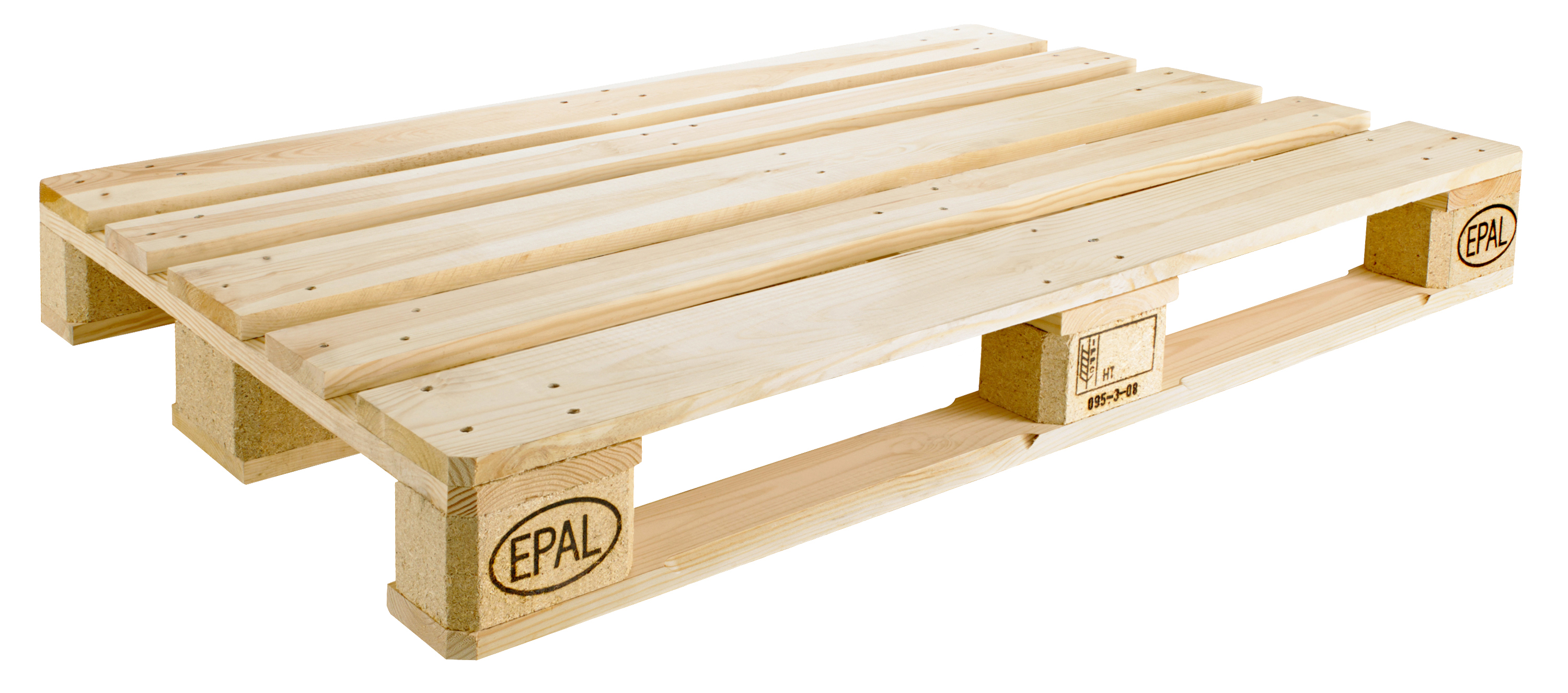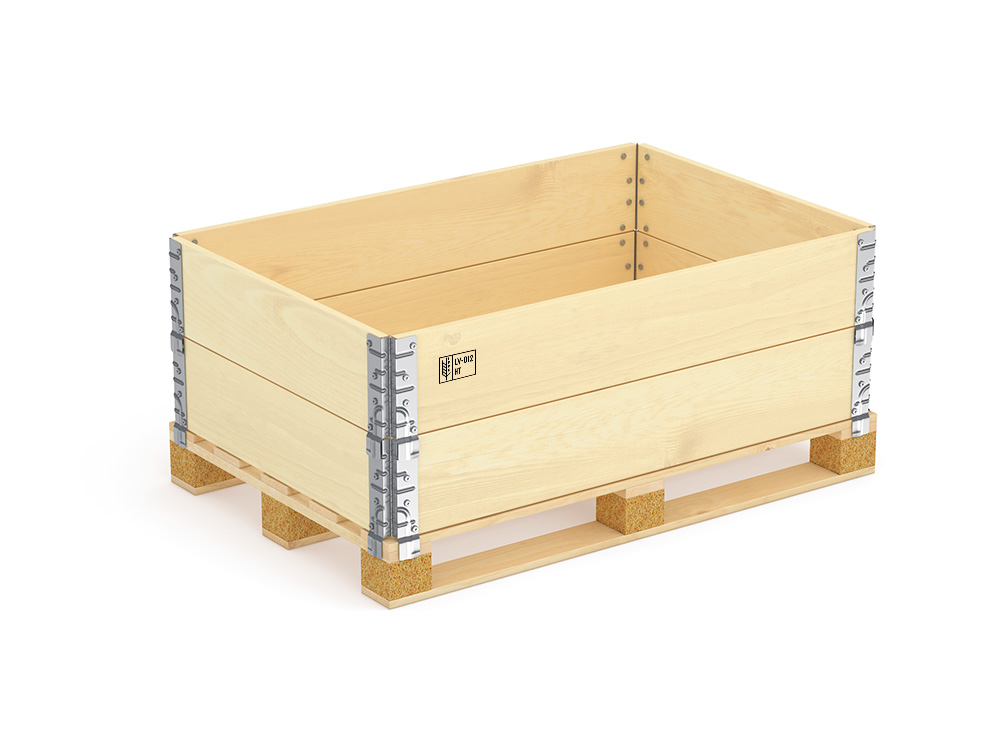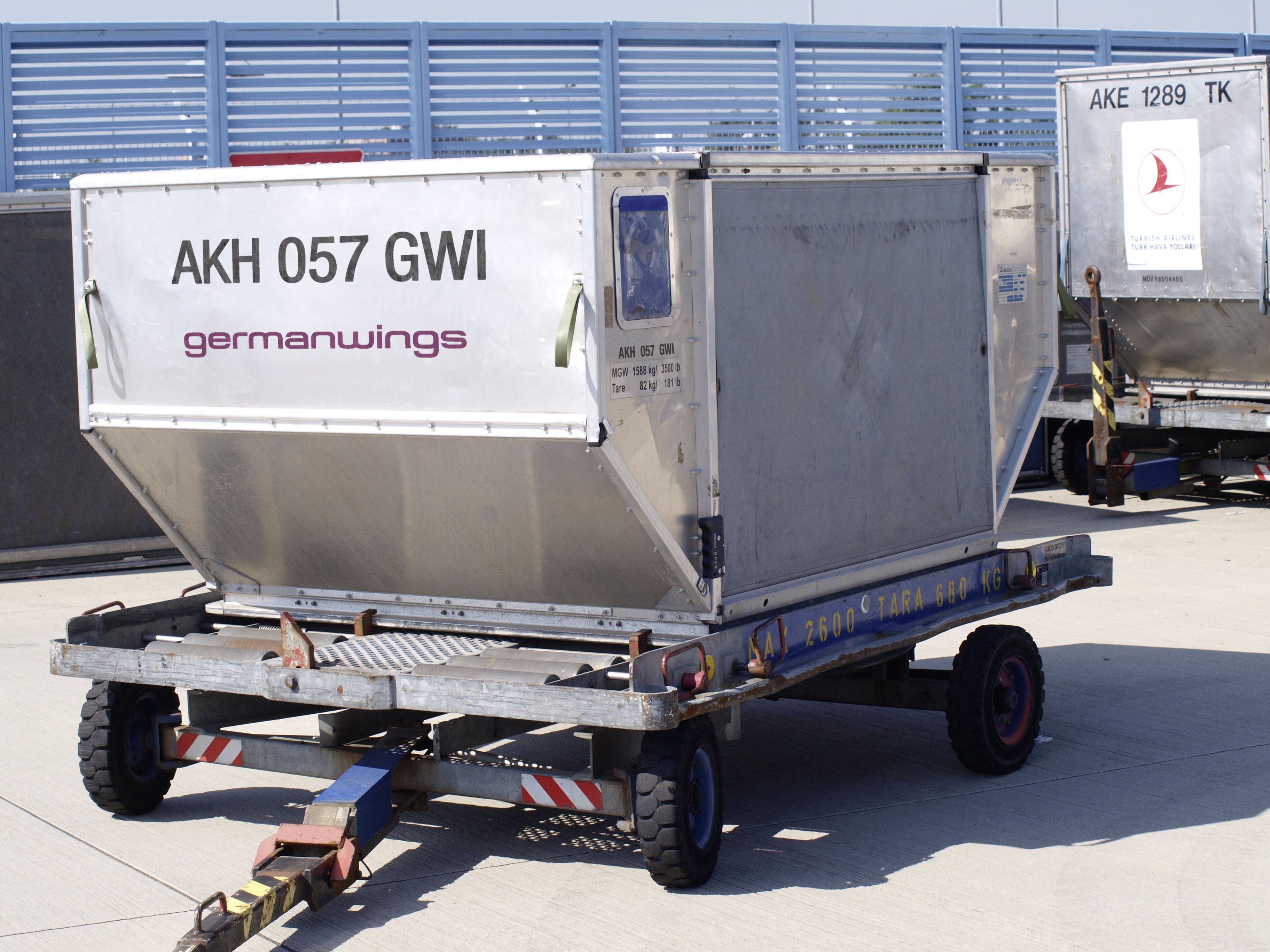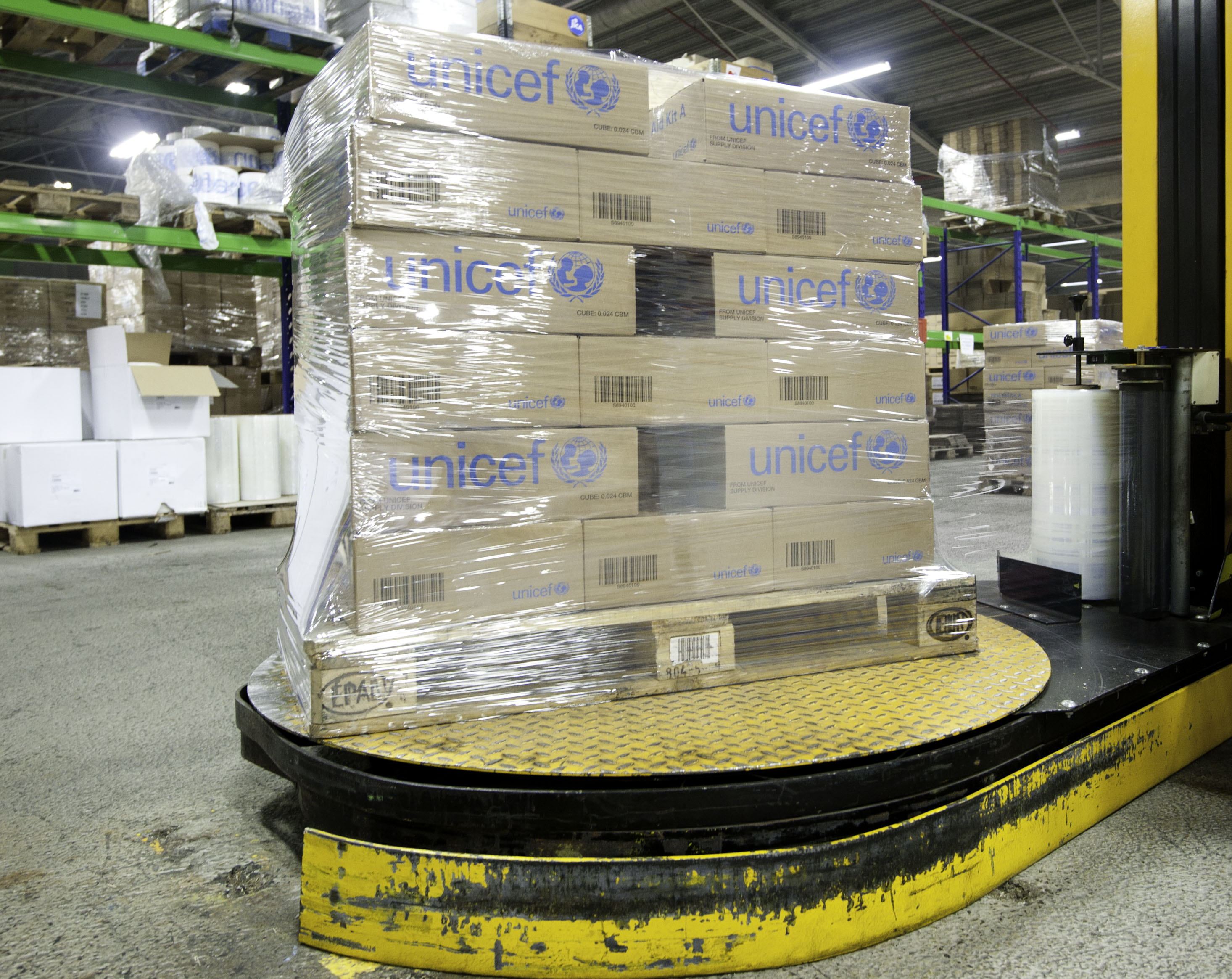|
Pallet
A pallet (also called a skid) is a flat transport structure, which supports goods in a stable fashion while being lifted by a forklift, a pallet jack, a Loader (equipment), front loader, a Jack (mechanical), jacking device, or an erect crane. Many pallets can handle a load of . While most pallets are wooden, pallets can also be made of plastic, metal, paper, and recycled materials. A pallet is the structural foundation of a unit load, which allows handling and storage efficiencies. Goods in shipping containers are often placed on a pallet secured with strapping, stretch wrap or shrink wrap and shipped. In addition, pallet collars can be used to support and protect items shipped and stored on pallets. Containerization for transport has spurred the use of pallets because shipping containers have the smooth, level surfaces needed for easy pallet movement. Since its invention in the twentieth century, its use has dramatically supplanted older forms of crating like the wooden b ... [...More Info...] [...Related Items...] OR: [Wikipedia] [Google] [Baidu] |
EUR-pallet
The EUR-pallet, also known as Euro-pallet or EPAL-pallet, is the standard Pallet#Europe, European pallet as specified by the UIC pallet working group and the UIC 435-2 leaflet. Pallets conforming to the standardization are eligible for the European Pallet Pool (EPP), the system which allows for an exchange as "pallet for pallet". The EUR/EPAL-pallet is ; it is a four-way pallet made of wood that is nailed with 78 special nails in a prescribed pattern. The weight of a EUR/EPAL-pallet (EPAL 1) is approximately 25 kg. Around 450-500 million EUR-pallets are in circulation. The safe working load of a EUR/EPAL-pallet is 1,500 kg. The maximum additional load can be up to 4,000 kg when stacking. The EUR/EPAL-pallet may weigh up to when equally loaded, otherwise, the limit is . History The Euro-pallet dates back to the wooden pallets used in railway transport. In 1961 the European railways commissioned the standardization of a common pallet type under the auspices of the Internati ... [...More Info...] [...Related Items...] OR: [Wikipedia] [Google] [Baidu] |
Pallet Collar
A pallet collar is a type of wooden packaging that works together with a classic wooden pallet or custom pallets. The main difference in comparison to a normal wooden box is the possibility to collapse a pallet collar when not in use. As such, pallet collars have helped solve a problem in logistics. Pallet collars have increased in popularity worldwide in the past 20 years, with approximately 20,000,000 new collars manufactured each year worldwide. Each of the pallet collars is stacked on one another to form a box type of packing, but because of the convenient design they provide several important benefits that have high value in the storage and transportation industry. Overview With the growing popularity of containerized transportation by sea and land, there was an increased use of classic wooden pallets. To enhance transportation options for a wider range of products, pallet collars were introduced. Design A single pallet collar consists of four or six wooden board ... [...More Info...] [...Related Items...] OR: [Wikipedia] [Google] [Baidu] |
Pallet Jack
A pallet jack, also known as a pallet truck or pallet pump, is a tool used to lift and move pallets. Pallet jacks are the most basic form of a forklift and are intended to move palletized loads within warehouses, distribution centers, retail stores, and construction sites. Operational principle The jack is steered by a tiller-like lever called a 'tow bar' that also acts on the pump piston for raising the forks. A small lever on the tow bar's steering handle releases the hydraulic fluid, causing the forks to lower. The steering wheels are located directly below the tow bar and support the jacking mechanism. The front wheels inside the end of the forks are mounted on push rods attached to linkages that go to levers attached to the jack cylinder. As the hydraulic jack at the 'tiller' end is raised, the links force the wheels down, raising the forks vertically above the front wheels, raising the load upward until it clears the floor. The pallet is only lifted enough to clear the ... [...More Info...] [...Related Items...] OR: [Wikipedia] [Google] [Baidu] |
Forklift
A forklift (also called industrial truck, lift truck, jitney, hi-lo, fork truck, fork hoist, and forklift truck) is a powered industrial truck used to lift and move materials over short distances. The forklift was developed in the early 20th century by various companies, including Clark Material Handling Company, Clark, which made Transmission (mechanics), transmissions, and Yale Materials Handling Corporation, Yale & Towne Manufacturing, which made Hoist (device), hoists. Since World War II, the development and use of the forklift truck has greatly expanded worldwide. Forklifts have become an indispensable piece of equipment in manufacturing and warehousing. In 2013, the top 20 manufacturers worldwide posted sales of $30.4 billion, with 944,405 machines sold. History Developments from the middle of the 19th century to the early 20th century led to today's modern forklifts. The forerunners of the modern forklift were manually powered hoists to lift loads. In 1906, the Penns ... [...More Info...] [...Related Items...] OR: [Wikipedia] [Google] [Baidu] |
Warehouse
A warehouse is a building for storing goods. Warehouses are used by manufacturers, importers, exporters, wholesalers, transport businesses, customs, etc. They are usually large plain buildings in industrial parks on the rural–urban fringe, outskirts of cities, towns, or villages. Warehouses usually have loading docks to load and unload goods from trucks. Sometimes warehouses are designed for the loading and unloading of goods directly from railways, airports, or seaports. They often have crane (machine), cranes and Forklift truck, forklifts for moving goods, which are usually placed on International Organization for Standardization, ISO standard pallets and then loaded into pallet racking, pallet racks. Stored goods can include any raw materials, packing materials, spare parts, components, or finished goods associated with agriculture, manufacturing, and production. In India and Hong Kong, a warehouse may be referred to as a godown. There are also godowns in the Shanghai Bund. ... [...More Info...] [...Related Items...] OR: [Wikipedia] [Google] [Baidu] |
Intermodal Container
An intermodal container, often called a shipping container, or a freight container, (or simply "container") is a large metal crate designed and built for intermodal freight transport, meaning these containers can be used across different Mode of transport, modes of transport – such as from container ship, ships to Rail transport, trains to Semi-trailer truck, trucks – without unloading and reloading their cargo. Intermodal containers are primarily used to store and transport materials and products efficiently and securely in the global containerization, containerized intermodal freight transport system, but smaller numbers are in regional use as well. It is like a boxcar that does not have wheels. Based on size alone, up to 95% of intermodal containers comply with ISO standards, and can officially be called ISO containers. These containers are known by many names: cargo container, sea container, ocean container, container van or sea van, sea can or C can, or MILVAN, or SEAVA ... [...More Info...] [...Related Items...] OR: [Wikipedia] [Google] [Baidu] |
Unit Load
The term unit load refers to the size of an assemblage into which a number of individual items are combined for ease of storage and handling, for example a pallet load represents a unit load which can be moved easily with a pallet jack or forklift truck, or a container load represents a unit for shipping purposes. A unit load can be packed tightly into a warehouse rack, intermodal container, truck or boxcars, yet can be easily broken apart at a distribution point, usually a distribution center, wholesaler, or retail store for sale to consumers or for use. Function Most consumer and industrial products move through the supply chain in unitized or unit load form for at least part of their distribution cycle. Unit loads make handling, storage, and distribution more efficient. They help reduce handling costs and damage by reducing individual handling. A typical unit load might consist of corrugated fiberboard boxes stacked on a pallet or slip sheet and stabilized with stretch ... [...More Info...] [...Related Items...] OR: [Wikipedia] [Google] [Baidu] |
Reusable Packaging
Reusable packaging is manufactured of durable materials and is specifically designed for multiple trips and extended life. A ''reusable package'' or container is "designed for reuse without impairment of its protective function." The term returnable is sometimes used interchangeably but it can also include returning packages or components for other than reuse: recycling, disposal, incineration, etc. Typically, the materials used to make returnable packaging include steel, wood, polypropylene sheets or other plastic materials. Reusability of packaging is an important consideration of the environmental credo of "reduce, reuse, and recycle". It is also important to the movement toward more sustainable packaging. Returnable packaging is encouraged by regulators. Shipping containers For many years, several types of shipping containers have been returnable and reusable. These have made most sense when a reverse logistics system is available or can be readily developed. A return, recondi ... [...More Info...] [...Related Items...] OR: [Wikipedia] [Google] [Baidu] |
Stretch Wrap
Stretch wrap or stretch film, sometimes known as pallet wrap, is a highly stretchable plastic film that is wrapped around items. The elastic recovery keeps the items tightly bound. In contrast, shrink wrap is applied loosely around an item and shrinks tightly with heat. While it is similar to plastic food wrap, it is not usually made of material rated as safe for food contact. It is frequently used to secure pallet loads to one another but also may be used for bundling smaller items. Types of stretch film include bundling stretch film, hand stretch film, extended core stretch film, machine stretch film and static dissipative film. Materials The most common stretch wrap material is linear low-density polyethylene (LLDPE), which is produced by copolymerization of ethylene with alpha-olefins, the most common of which are butene, hexene and octene. The use of higher alpha-olefins (hexene or octene) gives rise to enhanced stretch film characteristics, particularly in respect ... [...More Info...] [...Related Items...] OR: [Wikipedia] [Google] [Baidu] |
Wooden Box
A wooden box is a container made of wood for storage or as a shipping container. Construction may include several types of wood; lumber (timber), plywood, engineered woods, etc. For some purposes, decorative woods are used. Boxes as shipping containers Wooden boxes are often used for heavy duty packaging when * high strength is needed for heavy and difficult loads * long term warehousing may be needed * large size is required * rigidity is required * when stacking strength is critical Boxes and crates are not the same. If the sheathing of the container (plywood, lumber, etc.) can be removed, and a framed structure will remain standing, the container would likely be termed a crate. If removal of the sheathing resulted in there being no way of fastening the lumber around the edges of the container, the container would likely be termed a wooden box. The strength of a wooden box is rated based on the weight it can carry before the cap (top, ends, and sides) is installe ... [...More Info...] [...Related Items...] OR: [Wikipedia] [Google] [Baidu] |
Containerization
Containerization is a system of intermodal freight transport using intermodal containers (also called shipping containers, or International Organization for Standardization, ISO containers). Containerization, also referred as container stuffing or container loading, is the process of unitization of cargoes in exports. Containerization is the predominant form of unitization of export cargoes today, as opposed to other systems such as the barge system or palletization. The containers have Standardization, standardized dimensions. They can be loaded and unloaded, stacked, transported efficiently over long distances, and transferred from one mode of transport to another—container ships, rail transport flatcars, and semi-trailer trucks—without being opened. The handling system is mechanized so that all handling is done with cranes and special forklift trucks. All containers are numbered and tracked using computerized systems. Containerization originated several centuries ago ... [...More Info...] [...Related Items...] OR: [Wikipedia] [Google] [Baidu] |










